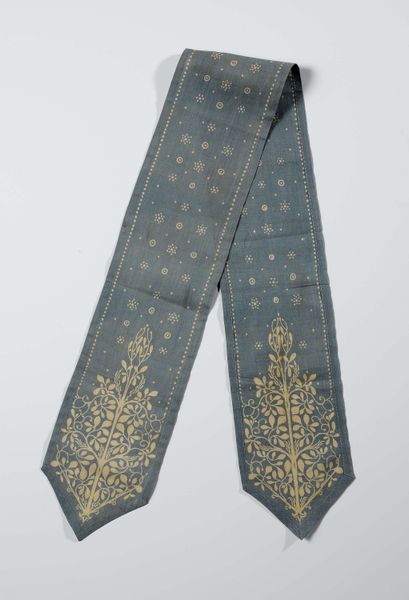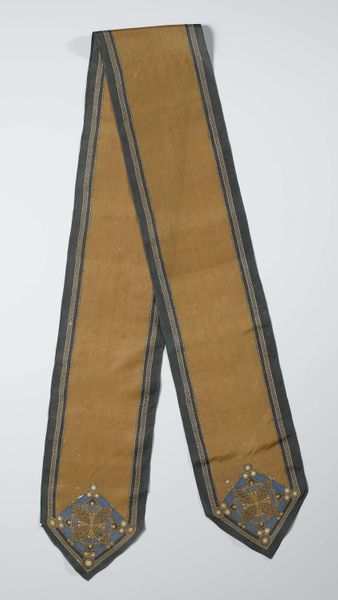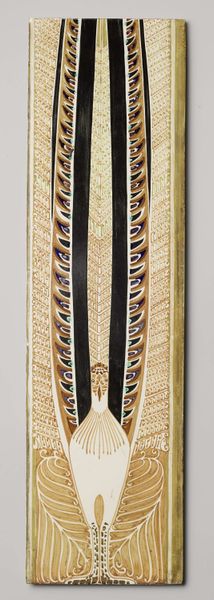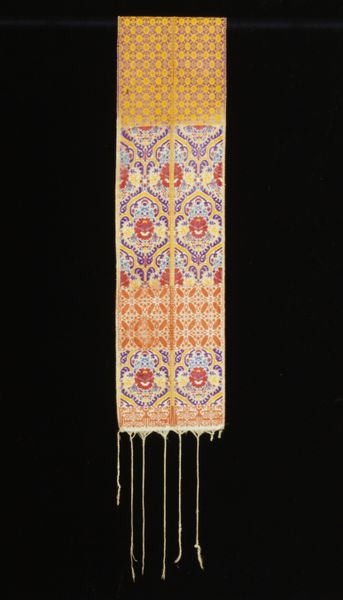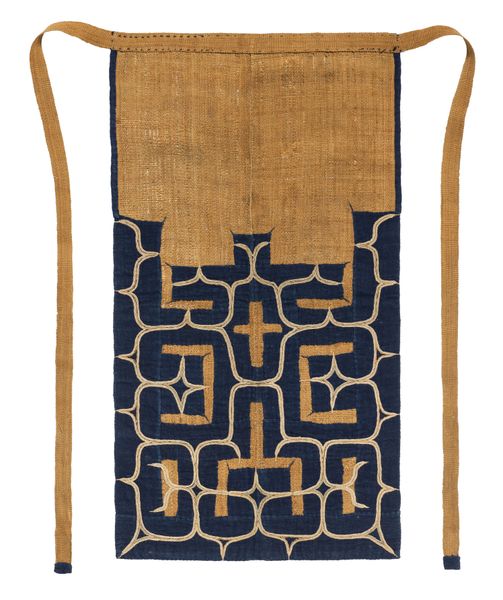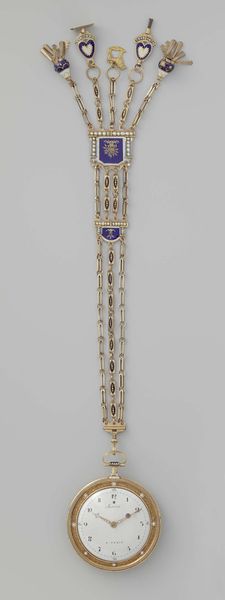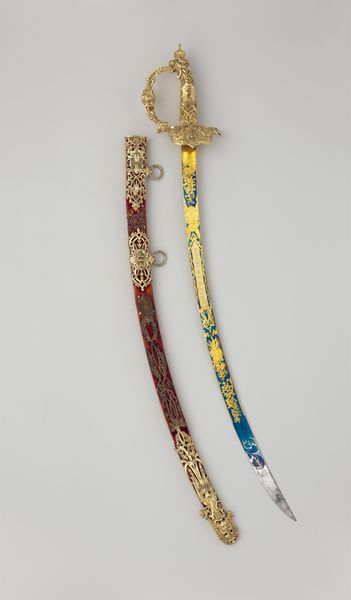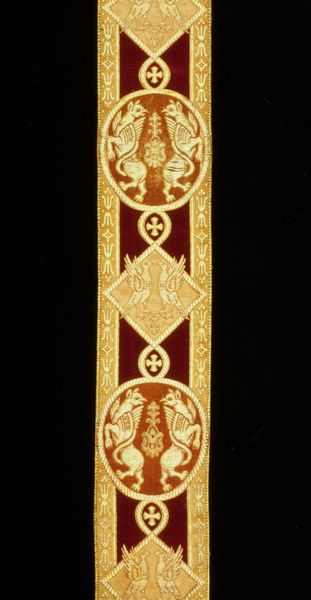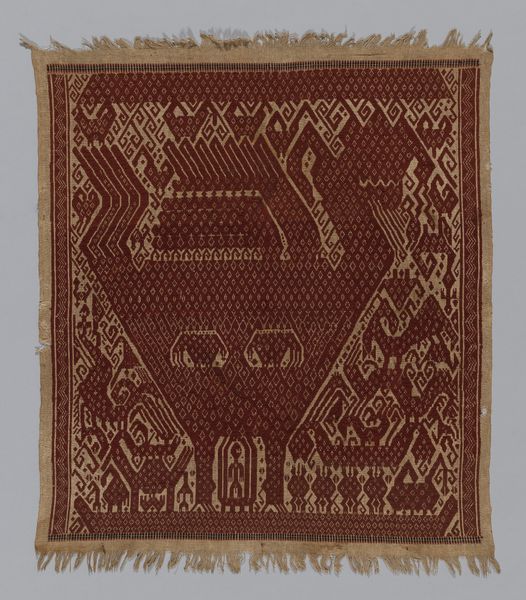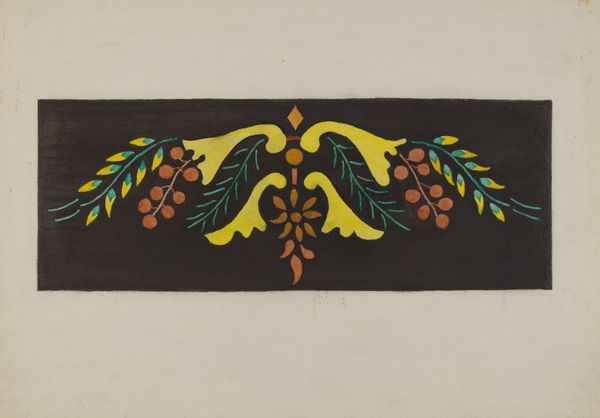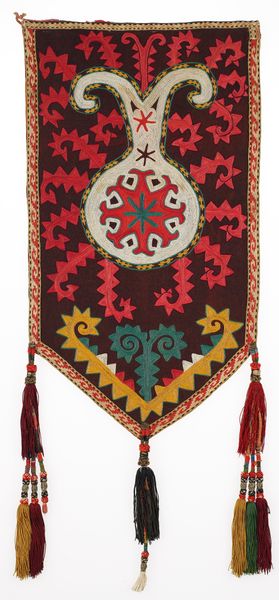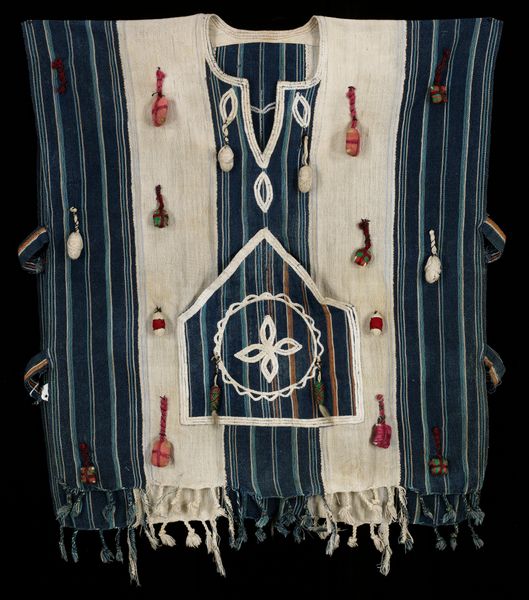
Langwerpige gebatikte sjaal in geel-goud, blauw, wit en groen, met onbewerkt middenstuk en aan beide uiteinden een staande figuur met gestrekte gespreide armen c. 1900 - 1910
0:00
0:00
fibre-art, silk, textile
#
fibre-art
#
art-nouveau
#
silk
#
fashion mockup
#
product fashion photography
#
fashion merchandise
#
textile
#
clothing promotion photography
#
figuration
#
fashion based
#
historical fashion
#
clothing photography
#
clothing theme
#
clothing photo
#
decorative-art
#
clothing design
Dimensions: width 18 cm, length 144 cm
Copyright: Rijks Museum: Open Domain
Curator: This batik silk scarf, dating from around 1900 to 1910, was created by the Dutch artist Chris Lebeau. It's a fascinating example of decorative art. Editor: It really is striking! The combination of the yellow-gold with those blue and black linear details creates a visual hierarchy. The figures on each end feel both stylized and monumental somehow, as though fashion itself has been ritualized. Curator: Lebeau was quite involved in the Art Nouveau movement, and that influence is really apparent here. He also explored various socialist ideals and sought to make art accessible to the masses through design and craftwork. Think of William Morris and the Arts and Crafts movement. Editor: And it does make me wonder, how this piece may have operated within prevailing social dynamics of the time? Did the design promote a vision of the feminine, and to whom exactly would this crafted textile have been available for purchase? Also, are those figures evocative of a particular deity, perhaps, or more generally symbolic? Curator: Absolutely! It’s plausible. Remember, textiles and fashion frequently served as statements of affiliation and identity, subtly conveying one's alignment within complex systems. Also the figures, with their outstretched arms, invite several possible interpretations - embracing the future or potentially gesturing a form of political statement. Editor: That connection really emphasizes how fashion operates within networks of symbolic exchange. How was this scarf intended to communicate identity or aspiration, perhaps reflecting or pushing against norms? Curator: Yes, seeing art this way reminds us how fashion continually negotiates and renegotiates prevailing definitions. And pieces like this invite that critical discourse about agency. Editor: Precisely. Viewing historical artworks as entry points into intersectional discourse – allowing the piece to reveal those long forgotten intricacies of its initial socio-cultural era. Curator: It really speaks volumes about that transformative time!
Comments
No comments
Be the first to comment and join the conversation on the ultimate creative platform.
